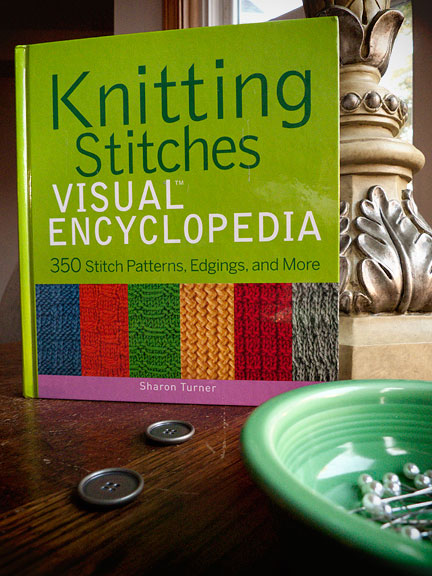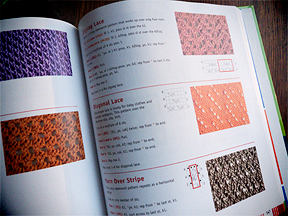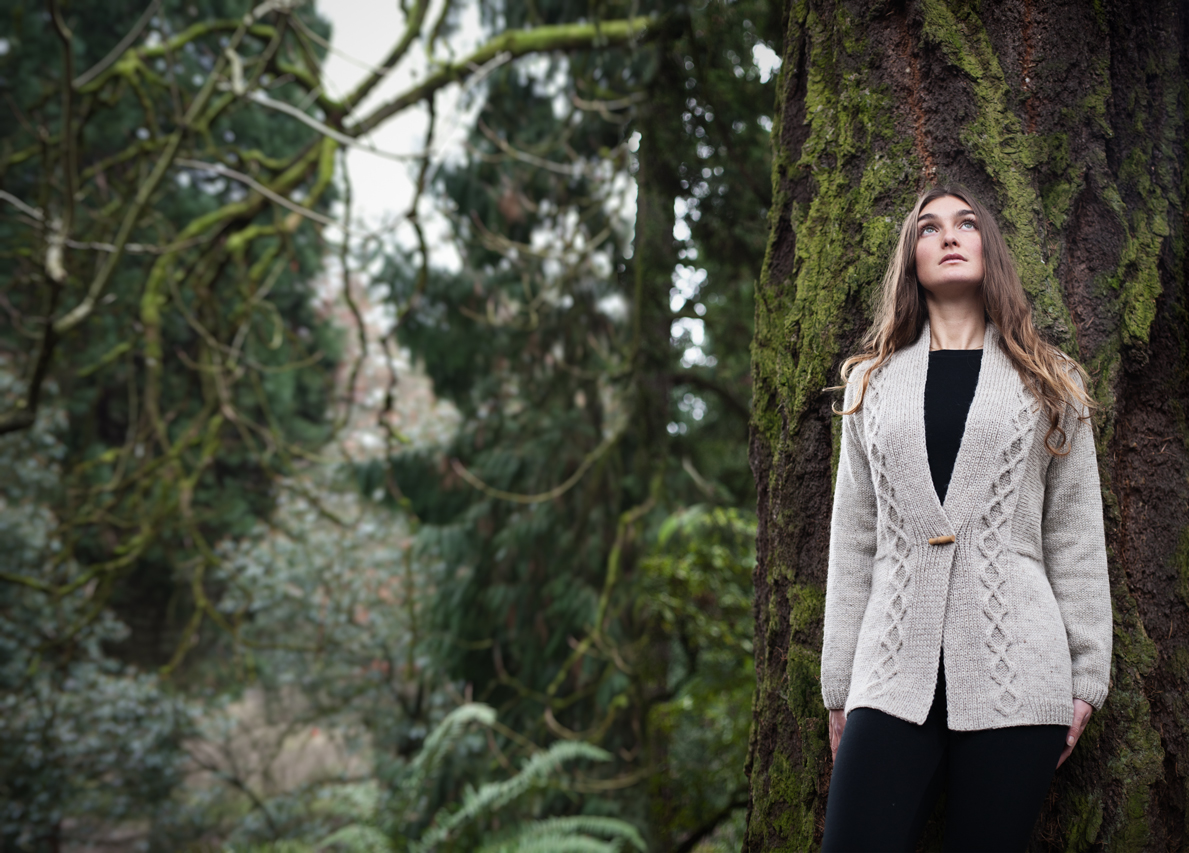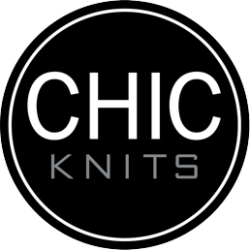
Sometimes, the better part of valor, especially at the end of a busy week, is to just go sit down with a good book, in a warm room and let nature take its course.
Refresh.
Reboot.
I like to get cozy with a cuppa tea and get inspired.
And what is one of the most often grabbed story-books off my shelf? Pattern Dicitonaries!
In them, you find historical paths to glory, signposts to possible future greatness, lovely catalysts just waiting for someone to flesh out into a tangible object.
These combinations of the building blocks of stitchery never cease to amaze and amuse me.
Here’s a collection that landed on my doorstep from the Wiley folks.

Wiley has put out, over the last few years, something they call the “Teach Yourself VISUALLY” series, and this, a stitch encyclopedia with 350 entries is their latest round-up.
What’s the story morning glory?
 Well, being the ultimate fan of stitch tomes, I must say that this one has something that not all of them possess: the book includes both charts and written directions, to as they say, “fully descibe each stitch”.
Well, being the ultimate fan of stitch tomes, I must say that this one has something that not all of them possess: the book includes both charts and written directions, to as they say, “fully descibe each stitch”.
I am a very big fan of charts — in fact, I love knitting with Japanese patterns that come in one size via a chart — as I find they convey information graphically so beautifully.
Think of the this: a picture is worth a thousand words. A chart, once your eyes become accustomed to their framework, delivers the goods like nothing else.
But to really inform all parts of our brain and the way it takes in knowledge, complete written instructions are a wonderful partner to Sir Chart and I love having that option.
Here you have both! It’s a great way for a chart lover to learn the flow of a pattern AND a great way for a write lover to acclimate to the magic of the more graphical anatomy.
For those of us who have basically been to the craft cyber-style born, then cradled and honed by the internet wiki, it’s a must…
I love stitch patterns however they come and this is a great addition to YOUR library.
Leave a comment below about your preference for chart vs written and we’ll random draw next TGIF for a copy of this cool book: Knitting Stitches: Visual Encyclopedia by Sharon Turner…


When knitting lace I prefer following a chart, other knitting doesn’t matter, either way.
Charts for me!
Charts are like great maps.
I like charts, they show me what the stitch will look like. But I LOVE written directions because I can follow along at my own pace.
I prefer visuals so a graphic representation of a knitted pattern is preferred!
Other than in a lace class I took w/Franklin teaching, I’ve never used anything except written instructions. It’s on my “to learn” bucket list.
I like both written and charted patterns. Charts are easier to quickly glance at, while words help more for a complicated row.
Actually, a pattern with both is my ideal. :)
It depends what I’m doing: sometimes I prefer charts and sometimes written. Charts are good for getting an overall view of what you’re doing and how stitches in other rows correspond. But I know written knitting language better than chart language so I don’t have to look up what something means so often if I’m following written instructions
Thanks for offering the book up as a prize, it sounds great
I used to prefer written instructions, but over the past year or 2 have come to prefer charts-they are so much easier to follow. It is nice when there are written instructions with the charts so you can refer to them if need be.
I prefer charts, but having the written directions as well can be helpful. Sometimes the written part can clarify a vague part of a chart, but there’s no beating the visual nature of a chart. I can “see” my knitting much more clearly with a chart.
I prefer charts but sometimes written instructions helped me.
I almost always prefer charts, to the point that if the pattern only has written instructions I usually make my own chart before beginning to knit. In one case that really saved me, when I charted the instructions and then compared the chart to the photograph of the item and discovered that the written instructions had quite a few mistakes – so I was able to correct the chart before even casting on.
Charts, definitely! Love ’em!
The more I use charts the more I like them. I make my own charts for patterns that have only text directions.
I prefer written. Something about each row being written out helps me easily glance at the right row and the whole numbers and letters thing (i.e. k2tog) register more quickly with me and help me keep my place in the row more easily.
I love both, written gets me started then a chart to look at as I’m going along is great. Another good thing about charts is if I make a mistake it is easier to work out where I went wrong.
I am a teacher and my students need it written out. I like them to see both so they will learn what to do when I’m not around to guide them. Both are very much needed.
It took me some time to become accustomed to using charts, but once I did, I grew to like them. Whether or not I prefer them over written still depends on the project though. That book looks great!
As long as it is a well written pattern, it does not matter to me. Well written also applies to the charts in the sense they are easy to make out and they do not involve re learning stitch patterns as the designer as decided they want to throw in a different symbol.
I am just learning charts. Please pick me.
If I love the pattern, I’ll take chart or written.
Chart me, baby! If there’s only words, I make my own chart . . . XXO
I prefer charts, especially if I am doing a multi-row (like more than 8) lace pattern or a cabling. It just makes it so much easier to find the inevitable mistakes.
I like written instructions, I dont mind useing a chart as a “back up”, but have been known to write out in longhand a pattern that is only charted
Absolutely charts. Probably because of the other crafts that I’ve done which rely so heavily on charts – crochet lace, cross stitch, beaded tapestries.
I prefer charts so that you can visualize the knitting, but having written as well is a good double check when something is complex.
Thanks for the nice offer of what looks like a very nice book.
Charts but I like to have the written instructions too.
As a visual artist (water-media), I find the benefit of a chart to supplement the written version keeps the excitement high during the process of creating a new item!
I’m mostly a chart fan, but I like having both the chart and written forms to give the fullest picture of how to execute a pattern. Thanks for the great giveaway!
Charts, charts, charts. If there are only written instructions for any kind of patterning, I will draw the chart myself. With a chart I can visualize the finished pattern, learn it much more quickly and find my place more easily when knitting.
I’m a huge fan of the chart because it turns out that I think visually and charting helps me to see what’s happening. I also find them quicker to work with because I can glance down and see where I’m at. However, it’s always nice to have both because some charts are so big they tend to be really small and harder to read.
I like written, but that may just be because I haven’t tried much with charts yet!
Am I too late to try my luck. This is just the kind of pattern book that I too love!